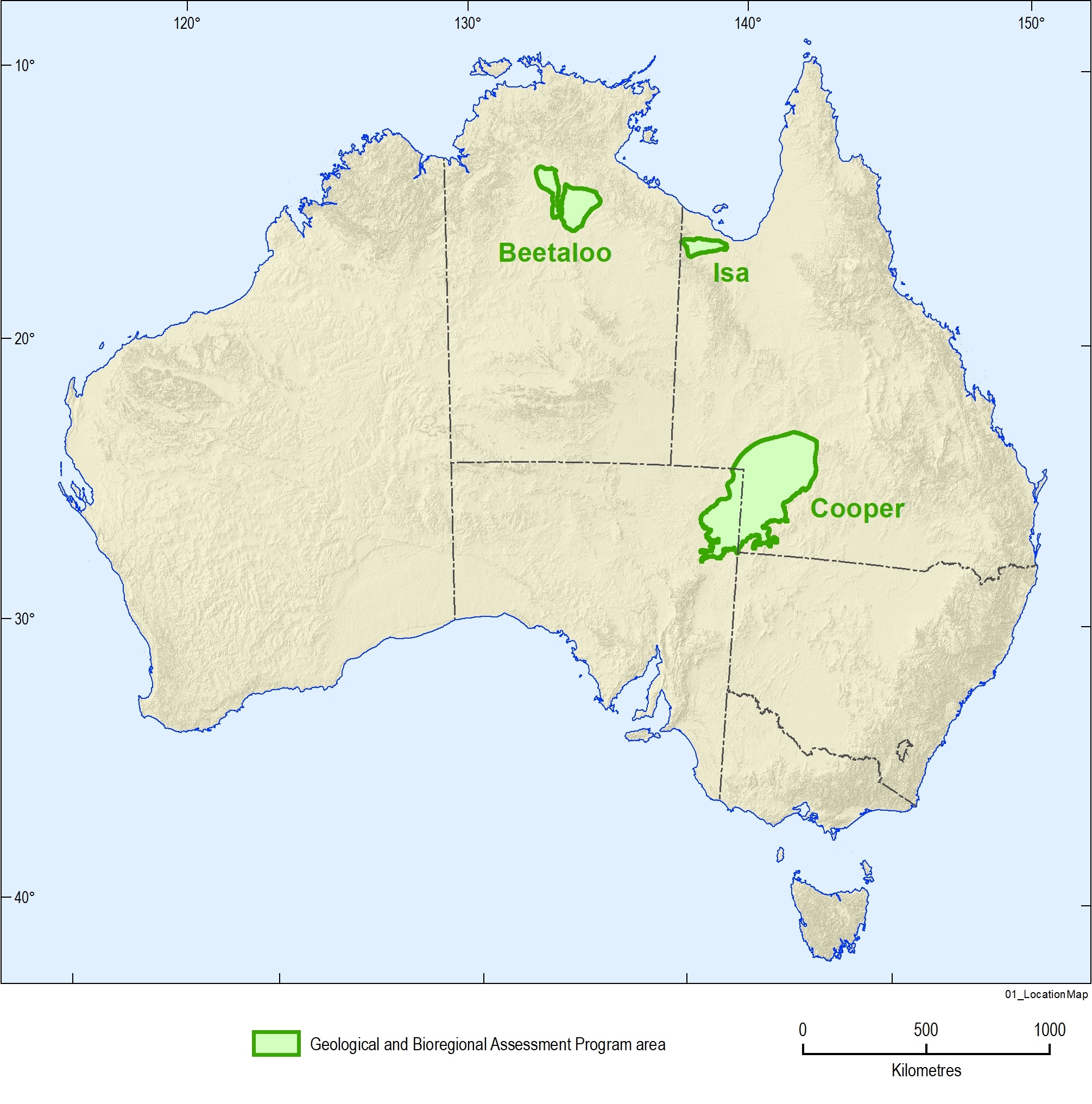News
Baseline analysis reports released for future shale and tight gas regions
Published:19 May 2020
Baseline analysis reports released for future shale and tight gas regions
Minister for the Environment Sussan Ley and Minister for Resources, Water and Northern Australia Keith Pitt have released baseline analysis reports from Stage Two of the Geological and Bioregional Assessment Program.
Minister for the Environment Sussan Ley and Minister for Resources, Water and Northern Australia Keith Pitt have released baseline analysis reports from Stage Two of the Geological and Bioregional Assessment Program.
This $35.4 million program is assessing the potential environmental and water-related impacts of future shale and tight gas development in three onshore geological basins – the Cooper Basin in north-east South Australia through to south-west Queensland; the Isa Superbasin in Queensland; and the Beetaloo Sub-basin in the Northern Territory.
Chief of Minerals, Energy and Groundwater, Dr Andrew Heap, said Geoscience Australia's work has been a major part of the program.
"Geoscience Australia is proud to be part of this joint-agency initiative which enables industry to responsibly develop unconventional gas resources to supply the East Coast Gas Market," Dr Heap said.
"Our comprehensive analysis of the available data has led to the first integrated interpretation combining the regional geology, unconventional gas prospectivity and hydrogeological systems of these three basins.
"This work, which is detailed in supporting technical reports, included the interpretation of satellite-derived datasets to evaluate surface water and groundwater interactions; the creation of new regional-scale unconventional gas prospectivity maps; and the development of hydrogeological systems models to better understand natural processes and components of each region.
"These new scientific insights are fundamental to ensuring shale and tight gas operations can be appropriately managed to support governments, industry and communities to better coordinate resource management for the benefit of the economy and the natural systems that surround these prospective regions.
"For example, Stage Two of the assessment has identified the groundwater resources in all three regions and how they are currently used to support local water users and the environment. It also identifies causal pathways which describe the chain of events that may link unconventional gas development with potential impacts on water and the environment.
"We also identified gaps in knowledge that will help to guide the final stage of the program, where we will further investigate groundwater recharge processes for the Beetaloo Sub-Basin, along with hydrological connections between shallow groundwater systems that overlie deep unconventional gas resources in the Cooper Basin.
"Thorough field studies are also being undertaken and results will be released in 2021.
"The information, data and analysis completed for these basins supports industry to meet the highest possible environmental standards for shale gas activities, which are worth an estimated $9.1 billion in the Beetaloo alone."
The Geological and Bioregional Assessment Program comprises a series of independent scientific studies undertaken by Geoscience Australia and CSIRO, supported by the Bureau of Meteorology and managed by the Department of Agriculture, Water and the Environment.
The reports and more information about the three stages of the program is available at the Geological and Bioregional Assessments Program's website.
Contact:
Phone:
Email:





